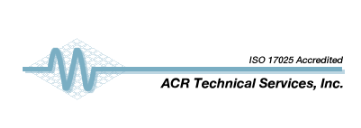Introduction:
In the realm of manufacturing, research, and quality control, precision is paramount. Physical Dimensional Calibration Services play a pivotal role in ensuring that measuring instruments and tools accurately reflect the intended dimensions. This article explores the importance of physical dimensional calibration, the calibration process, and its wide-ranging applications across industries.
The Essence of Dimensional Accuracy:
Precision in manufacturing and scientific endeavors hinges on the accurate measurement of physical dimensions. Whether it's manufacturing components, conducting research, or maintaining quality control standards, ensuring that measuring instruments provide reliable dimensional data is fundamental.
What is Physical Dimensional Calibration?
Physical dimensional calibration is the process of verifying and adjusting the accuracy of measuring instruments that quantify physical dimensions such as length, width, height, diameter, and other geometric attributes. This calibration ensures that these instruments adhere to established standards and deliver accurate measurements.
Importance Across Industries:
Manufacturing: In manufacturing, dimensional accuracy is vital for producing components that meet design specifications. Calibrated measuring instruments, such as calipers and micrometers, guarantee that each product adheres to precise dimensional requirements.
Aerospace and Defense: The aerospace and defense industries demand stringent precision in the fabrication of components. Calibrated measuring tools are critical for ensuring the accuracy of components in aircraft, missiles, and other defense systems.
Medical Devices: The production of medical devices requires meticulous attention to detail. Calibrated instruments are essential for guaranteeing the accuracy and safety of devices such as implants, diagnostic tools, and surgical instruments.
Automotive: In the automotive industry, precise dimensional calibration ensures the compatibility and functionality of various components, contributing to the safety and performance of vehicles.
Calibration Process:
The physical dimensional calibration process involves several key steps:
Verification: Instruments are initially inspected to assess their condition and identify any potential issues.
Adjustment: If discrepancies are detected, adjustments are made to bring the instrument into alignment with established standards.
Testing: The calibrated instrument undergoes testing against known reference standards to verify its accuracy.
Certification: Upon successful calibration, instruments receive certification documentation, providing evidence of their accuracy and compliance.
Types of Measuring Instruments Calibrated:
Physical dimensional calibration services cover a diverse range of measuring instruments, including:
Calipers: Both digital and manual calipers are calibrated to ensure accurate distance measurements.
Micrometers: Precise measurements of thickness and diameter are verified through micrometer calibration.
Height Gauges: Instruments used for vertical measurements are calibrated to guarantee accuracy.
Gauges and Fixtures: Customized gauges and fixtures are calibrated to meet specific industry requirements.
Compliance and Traceability:
Calibration services adhere to international standards, ensuring that measurements are traceable to the International System of Units (SI). Compliance with standards such as ISO 17025 reinforces the credibility of calibration processes.
Periodic Calibration:
To maintain accuracy over time, periodic calibration is essential. The frequency of calibration depends on factors such as the instrument's usage, environmental conditions, and industry regulations.
Conclusion:
Physical dimensional calibration services stand as guardians of precision in the world of measurements. From manufacturing components with meticulous accuracy to ensuring the safety of medical devices and the reliability of aerospace components, calibrated instruments are the bedrock of dimensional integrity. As technology advances and industries evolve, the role of physical dimensional calibration services becomes increasingly critical in maintaining the highest standards of accuracy and reliability across diverse applications.
Check out our site for more details:-
Electrical Calibration Services






Comments